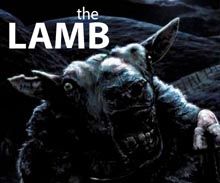 Kurosawa's first collaboration with actor Toshiro Mifune, is a Film Noir set in a Tokyo slum. The Drunken Angel of the piece is an alcoholic doctor who is drawn to young yakuza hood Matsunaga - subsequently diagnosed to be suffering from the advanced stages of tuberculosis. When Matsunaga's old boss, Okada, returns from a stint in jail, he pretends to fall back in with Matsunaga but is secretly preying on his weakened condition in a bid to take his territory for himself.
Kurosawa's first collaboration with actor Toshiro Mifune, is a Film Noir set in a Tokyo slum. The Drunken Angel of the piece is an alcoholic doctor who is drawn to young yakuza hood Matsunaga - subsequently diagnosed to be suffering from the advanced stages of tuberculosis. When Matsunaga's old boss, Okada, returns from a stint in jail, he pretends to fall back in with Matsunaga but is secretly preying on his weakened condition in a bid to take his territory for himself.I can imagine this being too slow-paced for some, but I found it to be an engaging insight into a bygone era of dapper gangsters and smoke-wreathed speakeasies, a curious melange of East and West, symptomatic perhaps of the American occupation of Japan at the time of the film's production. The main intrigue lies in the relationship of the doctor and Matsunaga; the way he sees his own failings magnified through his patient's plight and feels compelled to help him despite (largely hypocritical) misgivings about his lifestyle. In a sure sign of the times, the blame for Matsunaga's condition - and the ills of society in general - is laid squarely at the door of the demon drink. No-one, including a man dying of tuberculosis, gives a second thought to chain smoking their way through every scene.
Once again the bleakness of the film and its central theme of Man's inherent vampirism of spirit is mitigated somewhat by a slightly jarring, upbeat ending - although the fact it feels jarring might have more to do with my own taste for dysphoria, typical of the modern viewer, than it does with an excess of sentimentality on Kurosawa's part. That said, American Noir of the same era tends to be darker and more uncompromising.
酔いどれ天使
Dir. Akira Kurosawa, 1948

I like the sound of this one. I was reading that it had to dodge the US occupation censors because it was a veiled attack on the westernisation of Japan after WWII. A pretty disgusting attitude really, considering what the Japanese had been doing to countries they'd occupied in the previous years. Macarthur did a bang-up job in my opinion. A very interesting period, and central when looking at the current insanity of the Japanese.
ReplyDelete